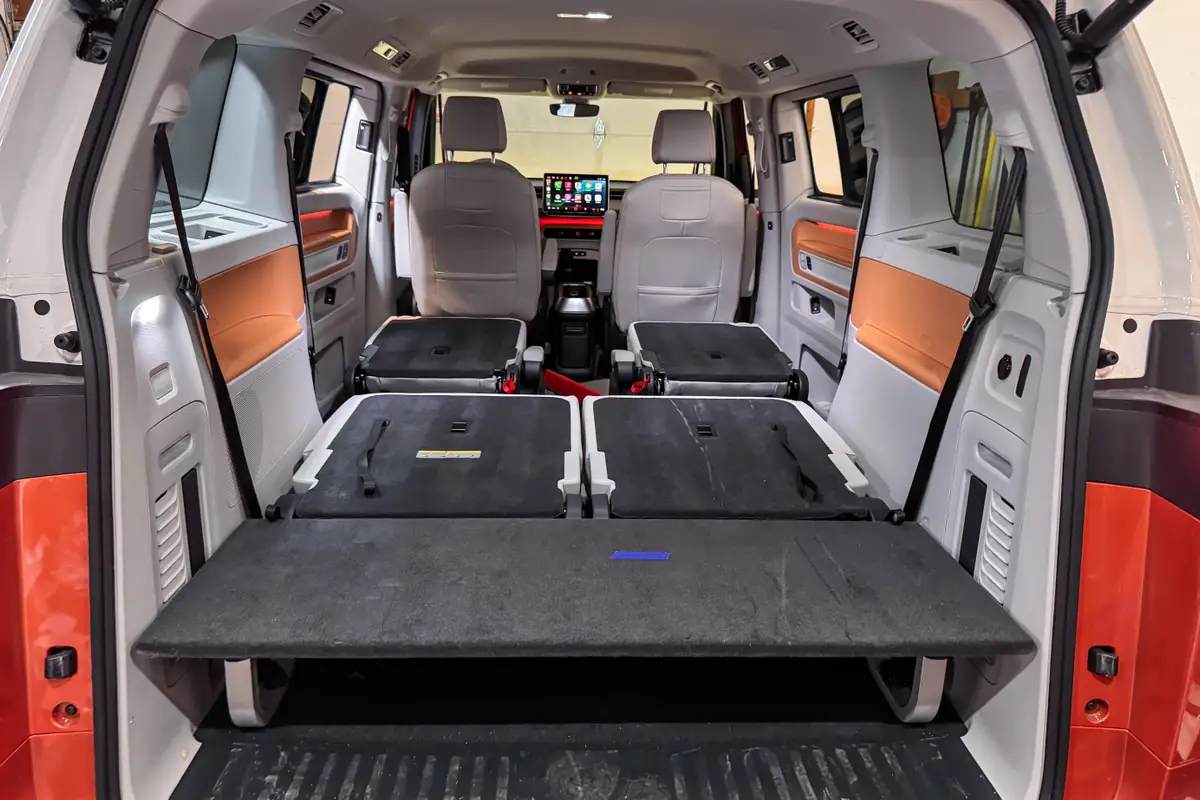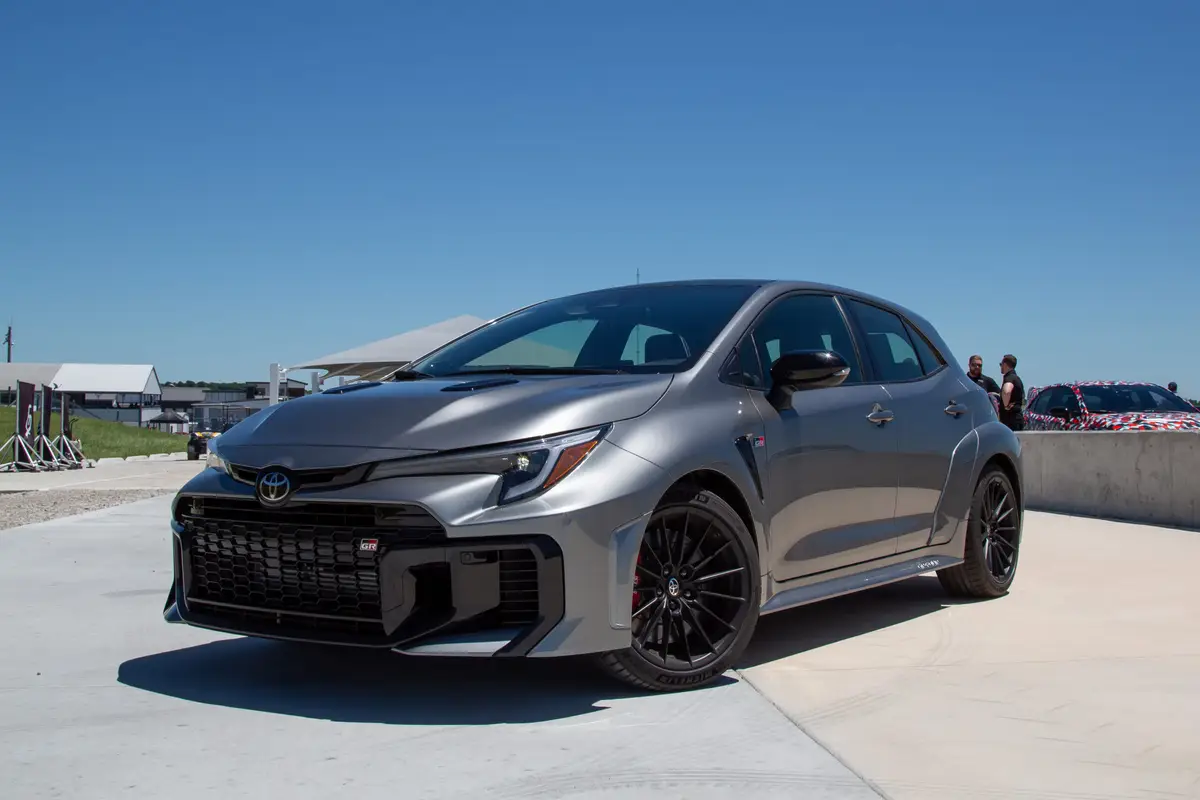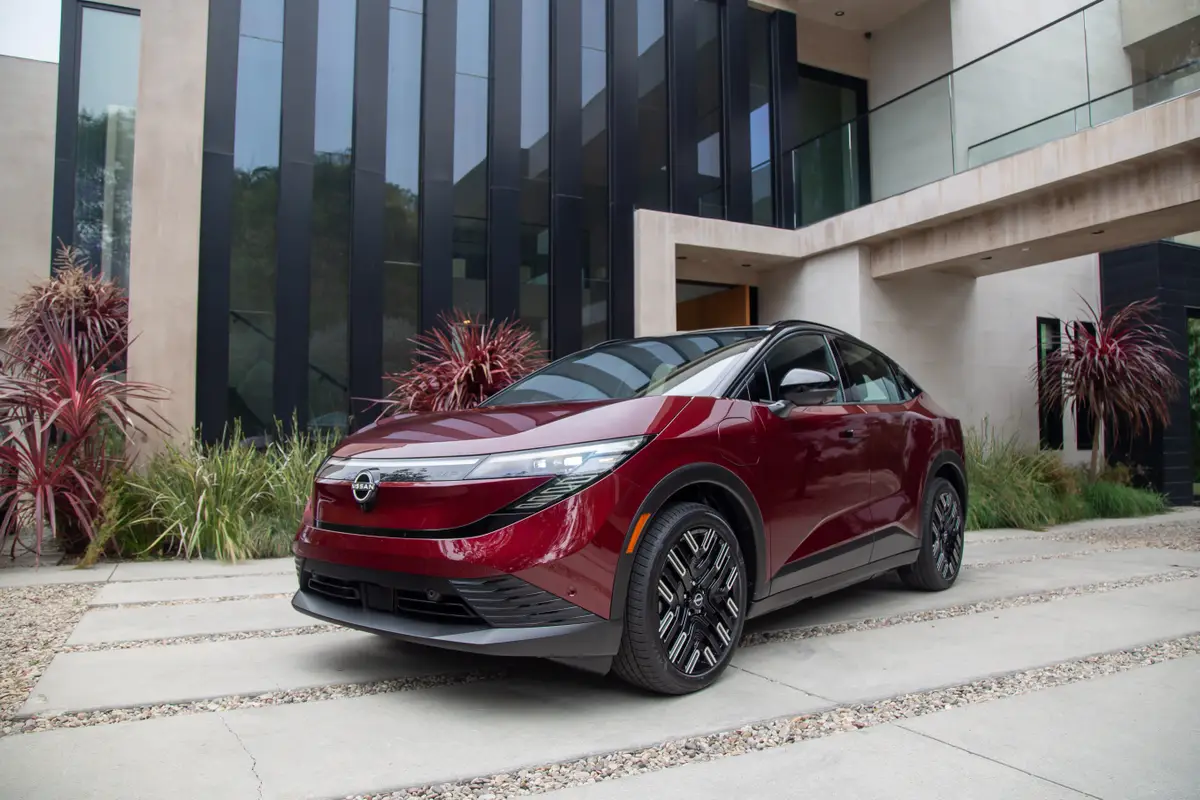2015 Honda Odyssey: Car Seat Check

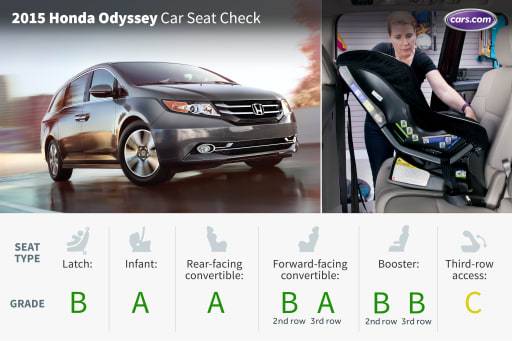
When fully loaded, Honda’s Odyssey minivan seems to have it all: a vacuum cleaner, a cool box for keeping drinks chilled, a rear entertainment system and plenty of places to charge devices. We last installed car seats into a 2014 Odyssey. Little has changed between model years, but our Car Seat Check grades have changed in some categories for 2015, due largely in part to the less than ideal positions of the Odyssey’s top tether anchors. This is an area we’re paying extra attention to since it’s something parents often overlook.
We tested the eight-passenger minivan’s top-line Touring Elite trim. We found a lot that families will like in this minivan such as fitting three child-safety seats across the backseat, but we were frustrated with tether anchor placement and third-row access.
How many car seats fit in the second row? Three
How many car seats fit in the third row? Two
What We Like
- The 2015 Odyssey has five sets of lower Latch anchors, with three sets in the second row and two sets in the third row. Four of the five sets of lower Latch anchors are exposed, making them easy to use. The second-row middle seat’s lower anchors are under removable hard plastic covers.
- The rear-facing infant seat installed easily. We had to move the front passenger seat forward less than an inch to accommodate it. Our 5-foot-8 tester’s legroom wasn’t negatively affected by this.
- The rear-facing convertible fit well in the Odyssey. There was no need to adjust the front passenger seat to fit the rear convertible.
- The forward-facing convertible fit well in both rows. We removed the third row’s large head restraint when installing the convertible in the third row. In the second row, we had troubles connecting to the tether anchor since it’s so far down the seatback.
- In the second row, the high-back booster seat fit well. The booster’s fit in the third row was a little tighter because of a protruding armrest under the minivan’s window.
What We Don’t
- There are six tether anchors in the Odyssey, which is great to see, but we had concerns about them. In the second row, the tether anchors are on the base of the seatback. This location can be difficult to find and use. We slid the outboard seat forward to better access the tether anchor, but there wasn’t enough room to see what we were doing. We had to connect the forward-facing convertible’s tether strap to the anchor by feel, which newer parents may not be able to do.
- In the third row, the tether anchors aren’t marked and parents may be unsure where to connect the tether strap. We checked in the Odyssey’s owner’s manual to make sure we were using the tether anchor correctly.
- Both the second- and third-row seat belt buckles are on floppy bases, which can be difficult for younger kids to use on their own.
- Getting into the third row is a bit like threading a needle: The sliding door doesn’t quite open far enough to create a wide opening. The second-row outboard seats fold and slide forward, but they still take up too much real estate, and there’s just not enough room to climb into the back if you’re an adult or a teen. Younger kids should have fewer problems.
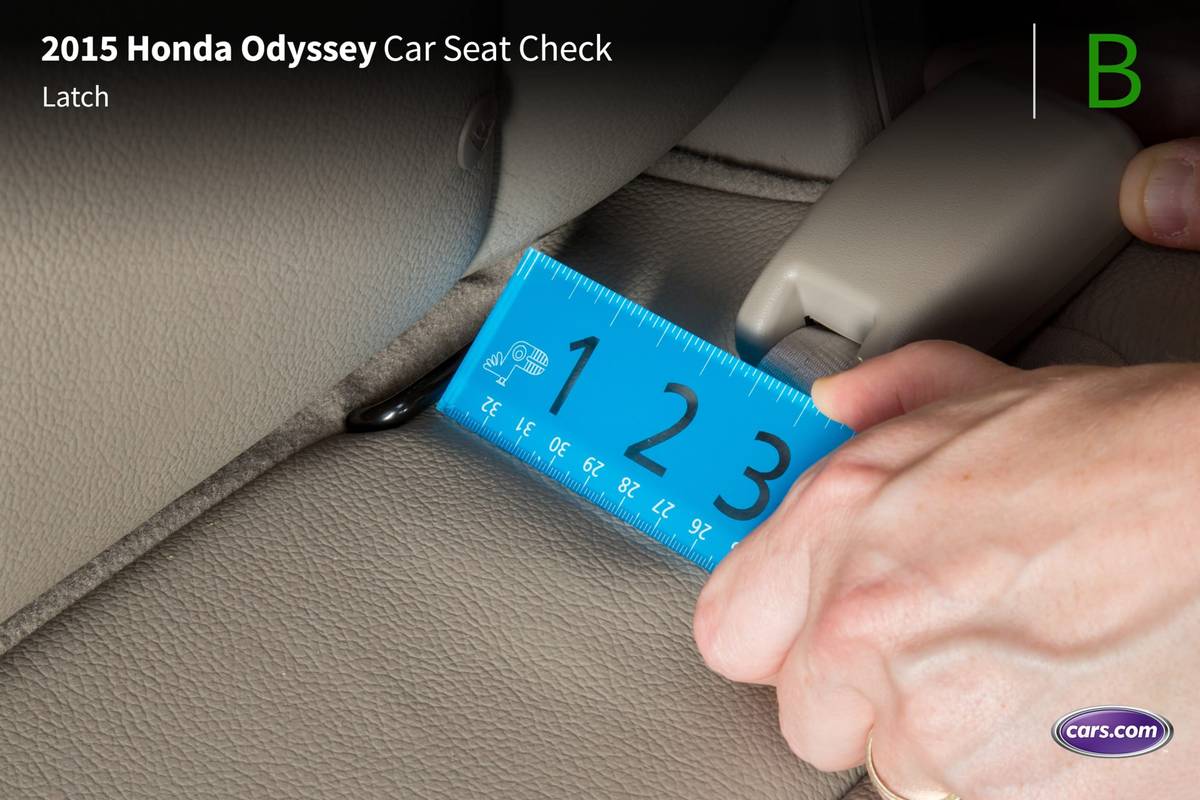
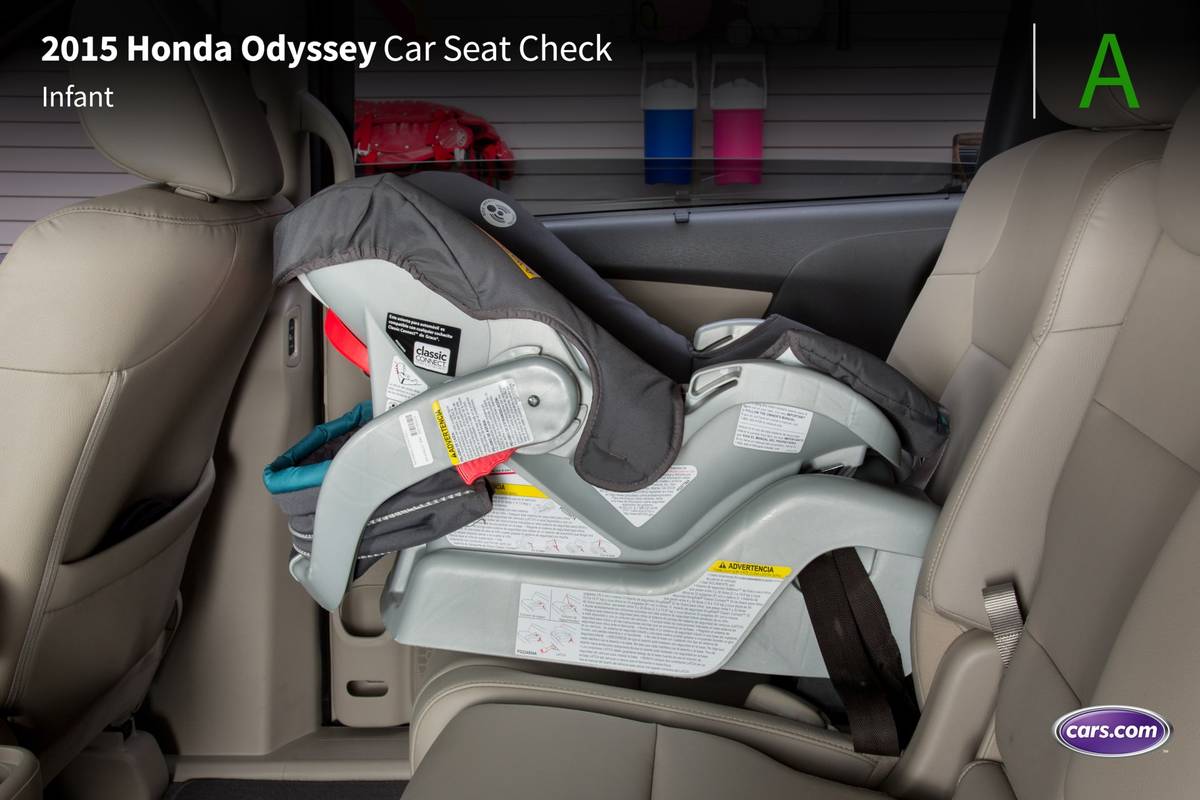
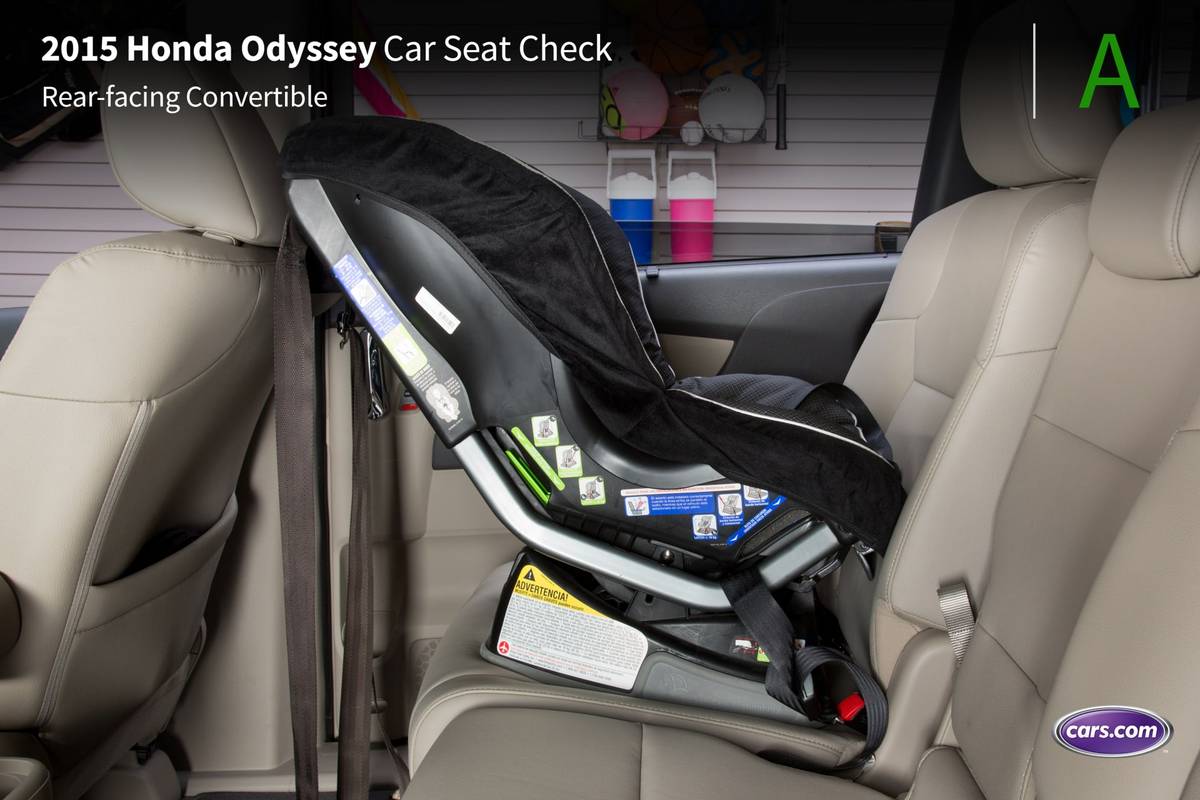
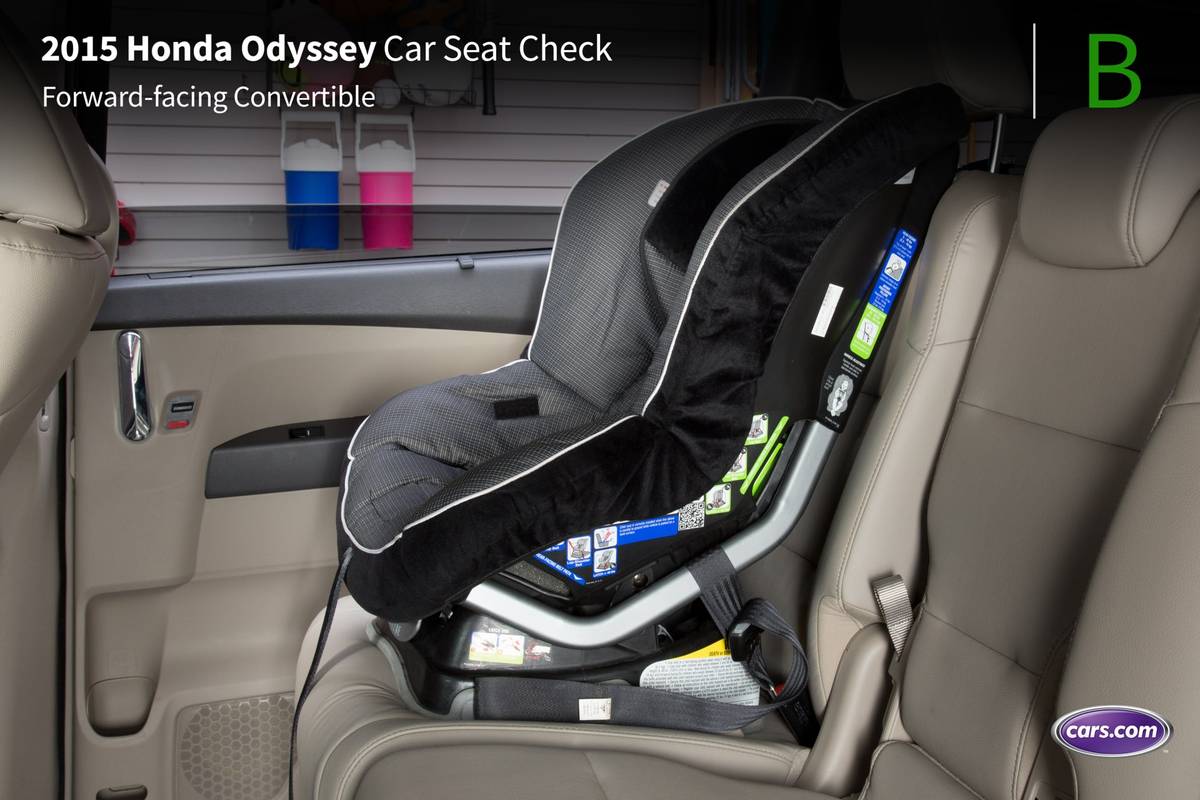
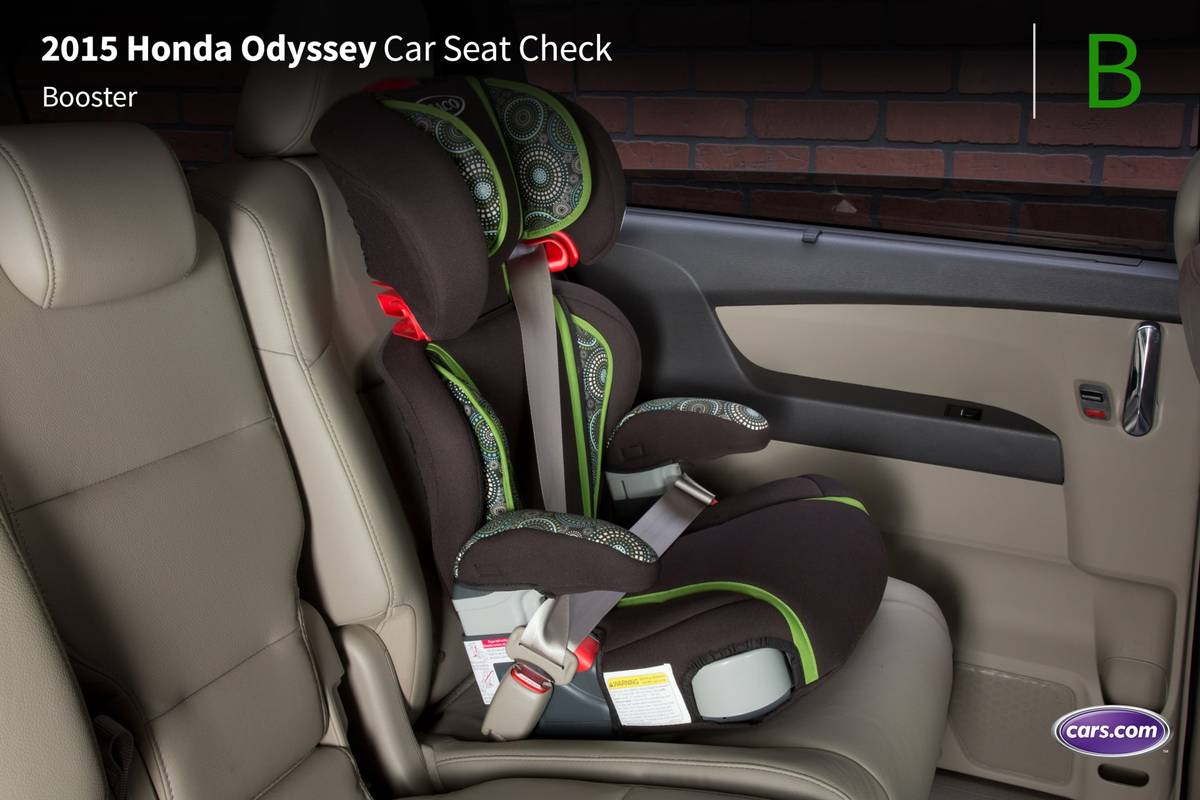
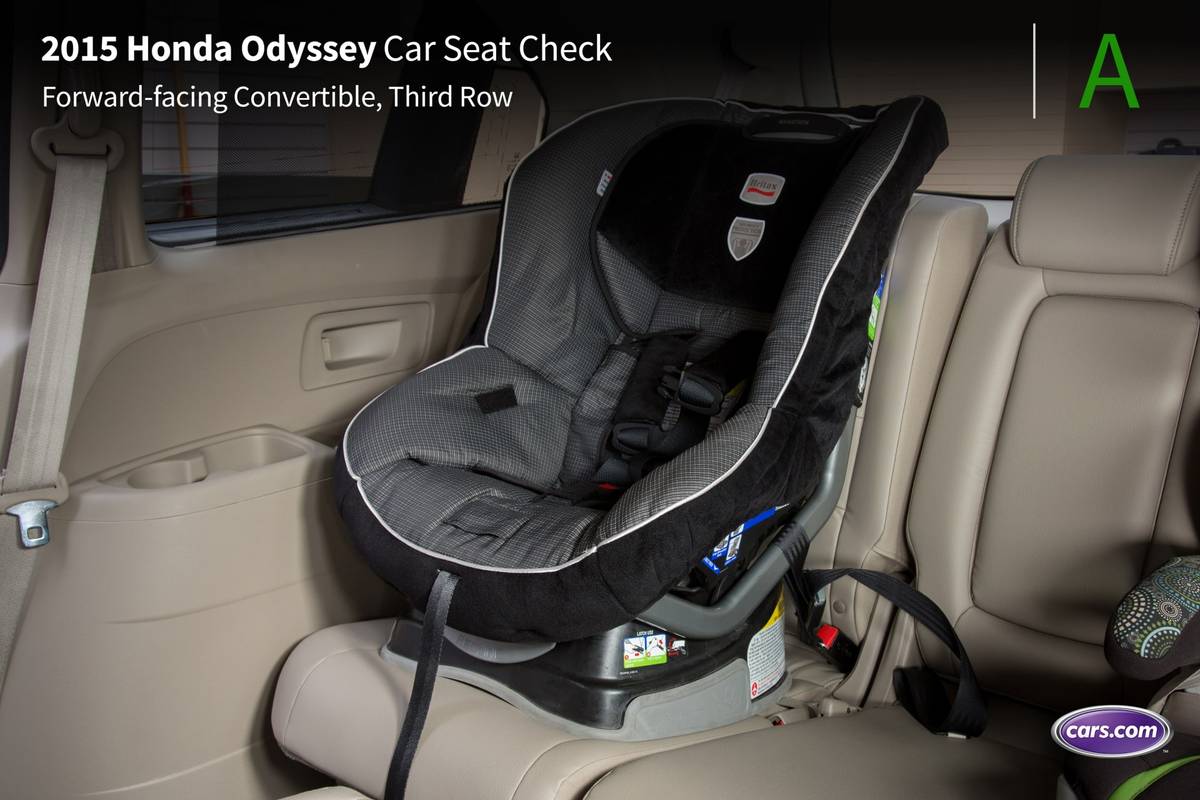

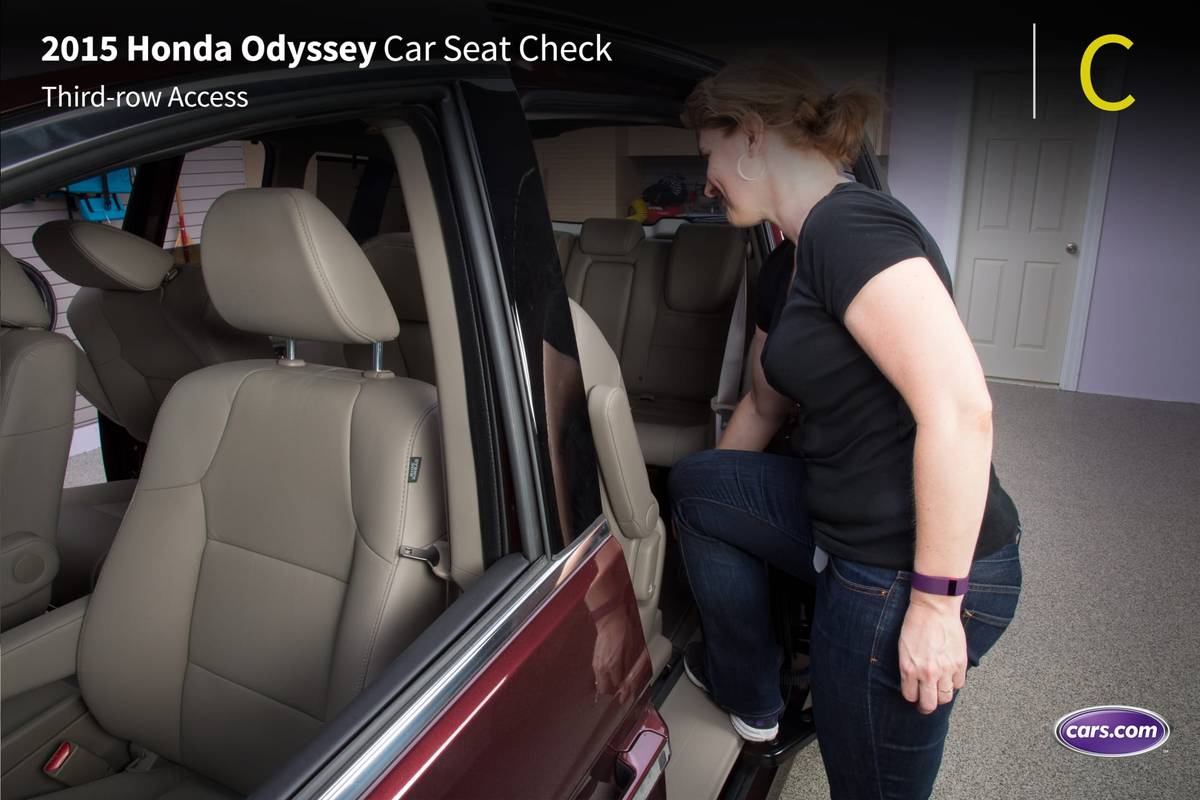








Grading Scale
A: Plenty of room for the car seat and the child; doesn’t impact driver or front-passenger legroom. Easy to find and connect to Latch and tether anchors. No fit issues involving head restraint or seat contouring. Easy access to the third row.
B: Plenty of room. One fit or connection issue. Some problems accessing third row when available.
C: Marginal room. Two fit or connection issues. Difficult to access third row when available.
D: Insufficient room. Two or more fit or connection issues.
F: Does not fit or is unsafe.
About Cars.com’s Car Seat Checks
Editors Jennifer Geiger and Jennifer Newman are certified child-safety seat installation technicians.
For the Car Seat Check, we use a Graco SnugRide Classic Connect 30 infant-safety seat, a Britax Marathon convertible seat and Graco TurboBooster seat. The front seats are adjusted for a 6-foot driver and a 5-foot-8 passenger. The three child seats are installed in the second row. The booster seat sits behind the driver’s seat, and the infant and convertible seats are installed behind the front passenger seat.
We also install the forward-facing convertible in the second row’s middle seat with the booster and infant seat in the outboard seats to see if three car seats will fit; a child sitting in the booster seat must be able to reach the seat belt buckle.
If there’s a third row, we install the booster seat and a forward-facing convertible. To learn more about how we conduct our Car Seat Checks, go here.
Parents should also remember that they can use the Latch system or a seat belt to install a car seat, and that Latch anchors have a weight limit of 65 pounds, including the weight of the child and the weight of the seat itself.

Editor-in-Chief Jennifer Newman is a journalist with more than 25 years of experience, including 15 years as an automotive journalist at Cars.com. Jennifer leads the Editorial team in its mission of helping car shoppers find the vehicle that best fits their life. A mom of two, she’s graduated from kids in car seats to teens behind the steering wheel. She’s also a certified car-seat technician with more than 12 years of experience, as well as member of the World Car Jury, Automotive Press Association and Midwest Automotive Media Association. LinkedIn: https://www.linkedin.com/in/jennilnewman/ Instagram: @jennilnewman
Featured stories
